Results 7,701 to 7,710 of 12096
Thread: Anandtech News
-
01-08-18, 03:53 AM #7701
Anandtech: Sony Unveils Xperia XA2, Xperia XA2 Ultra, and Xperia L2
LAS VEGAS, NV — Today at CES 2018, Sony announced the addition of three new phones to their Xperia line: the Xperia XA2, Xperia XA2 Ultra, and Xperia L2. Slotting in under the XZ flagship series, the mid-range XA2 and XA2 Ultra succeeds the original XA and XA Ultra, while the lower-end L2 succeeds the L1. The new series brings a number of hardware changes and specification upgrades across the board.
In comparing to the preceding Xperia series, the specifications of the XA2, XA2 Ultra, and L2 do seem to indicate improvements on the weaker aspects of the first iteration. All three now have always-on fingerprint scanners and larger battery sizes. The XA2 has also seen its display upgraded to Full HD 1080p. And at least on paper, the change from MediaTek to Qualcomm Snapdragon should provide a slight performance increase for the XA2 phones. The Snapdragon 630 mobile platform features 150Mbps upload and 600Mbps download speeds, an increase from the XA1 capabilities.
The XA2 line's SoC upgrade from the MediaTek Helio P10 to the Snapdragon 630 should also significantly improve battery as the new chipset comes in a 14nm manufacturing node over the P10's 28nm. Together with the large 3300 mAh and 3580 mAh batteries of the XA2 and XA2 Ultra we should see extreme longevity on the new models.Announced Sony Xperia Handsets Xperia XA2 Xperia XA2 Ultra Xperia L2 SoC Snapdragon 630
8x Cortex A53 @ 2.2GHzSnapdragon 630
8x Cortex A53 @ 2.2GHzMediaTek MT6735P
4x Cortex A53 @ 1.5GHzGPU Adreno 508Adreno 508 Mali T720-MP2 @ 450MHz RAM 3GB LPDDR4-1333 4GB LPDDR4-13333GB LPDDR3 NAND 32GB eMMC
+ microSD32GB/64GB eMMC
+ microSD32GB eMMC
+ microSDDisplay 5.2” 1080p LCD 6" 1080p LCD5.5” 720p LCDDimensions 142 x 70 x 9.7 mm
171 grams163 x 80 x 9.5 mm
210 grams150 x 78 x 9.8mm
178 gramsNetworks GSM GPRS (2G), UMTS HSPA (3G), LTE (4G) CAT 13/12 GSM GPRS (2G), UMTS HSPA (3G), LTE (4G) CAT 13/12 GSM GPRS (2G), UMTS HSPA (3G), LTE (4G) CAT 4 SIM Size NanoSIM NanoSIM NanoSIM Front Camera 8 MP 120-degree, Exmor R, SteadyShot 16 MP with OIS 8 MP 120-degree 8 MP 120-degree, SteadyShot Rear Camera 23 MP, 1/2.3” Exmor RS, Hybrid AP, 5x Clear Image Zoom, 0.6s Quick Launch, ISO 12800 23 MP, 1/2.3” Exmor RS, Hybrid AP, 5x Clear Image Zoom, 0.6s Quick Launch, ISO 12800 13 MP AF, 3x Clear Image Zoom, ISO 3200 Battery 3300 mAh 3580 mAh 3300 mAh Connectivity Wi-Fi, BT 5.0, NFC,
3.5mm jack,
USB Type-CWi-Fi, BT 5.0, NFC,
?3.5mm jack,USB Type-CWi-Fi, BT 4.2, NFC,
?3.5mm jack,USB Type-CLaunch OS Android 8.0 Oreo Android 8.0 Oreo Android 7.1.1 Nougat
The L2 looks to be an odd successor as Sony specifies a SoC with a T720MP2 at 450 MHz, pointing out at the usage of a MediaTek MT6735P over the MT6737 in the original L1, which while it has increased CPU frequencies, actually downgrades the GPU frequency.
The Xperia XA2 handsets continue to have the 23MP main camera, though the low-light photo capability now goes up to ISO 12800. Notably, the XA2 series main cameras can now record 4K video, as well as 120fps slow-motion video. The Xperia XA2 now has a 120-degree super-wide-angle lens on the 8MP front camera, while the Xperia XA2 Ultra adds to that with a dual front camera setup: a 16MP primary camera with Optical Image Stabilization (OIS), and 8MP 120-degree super-wide-angle lens secondary camera. For the L2, the front camera was likewise upgraded to the 120-degree lens 8MP camera.
And as far as design goes, those who dislike bezels will appreciate that the top and bottom bezels have been reduced compared to their predecessors.
The Xperia XA2, Xperia XA2 Ultra, and Xperia L2 will be available later this month, and Sony noted that the handsets will roll out in early February. Pricing has not been disclosed at this time.
Source: Sony
More...
-
01-08-18, 07:34 AM #7702
Anandtech: It’s Actually an Intel Chip: Rivet Networks Launches the Killer Wireless-A
LAS VEGAS, NV —One of the main criticisms about the Killer network controllers, either wireless or wired, is that they aren't Intel. The hardware isn't Intel, or the level of support isn't Intel. Today, Rivet Networks is announcing that its latest Wi-Fi chip, the Killer Wireless-AC 1550, is coming to market, and it is manufactured by Intel.
Wait, What? Manufactured by Intel?
To answer the obvious questions, let us start with a recap.
The back story: In 2006, Bigfoot Networks introduced the Killer NIC – a PCIe card using a Freescale processor that promised to reduce network latency and lag. In 2011, Qualcomm bought the technology, putting it alongside on its own Atheros wired and wireless chips, but also reducing the cost and expanded the user base. In 2014, the technology was spun out to Rivet Networks, a new company formed by the CEO and CTO of Bigfoot, but still using Qualcomm’s manufacturing expertise and connections.
The new story: In 2015, Intel discussed with Rivet to create a combined solution – the argument being that it would be better to collaborate than compete. Rivet was still ‘new’, managing the hardware post-Qualcomm, so initially nothing came of it. In 2016, Intel presented Rivet with defined roadmaps, and now with Killer across a fair amount of the industry (motherboards, Dell XPS, MSI), the partnership started.
What happened from here is that Intel was to design and manufacture the chip. Rivet had a list of hardware requirements in order to be able to perform the features needed to perform Killer functionality, and Intel built these into the chip and gave Killer the required access to the silicon. Ultimately the chip would provide two different products: the Intel AC9260, and the Killer Wireless-AC 1550.
With only one piece of silicon, only one set of regulatory approval was needed (which is expensive), and each company would sell the chip on its own, with company-specific features: Intel does its thing, while Rivet can enable their version with the features to make it a ‘Killer’ chip, such as packet prioritization, support for DoubleShot, etc.
The end result is that the AC 1550 should have the stability of Intel (in fact, the AC9260 has been on sale for several months already), but the additional features of Killer. The driver for both is pretty much the same, being a combined effort between Intel and Killer, while the Killer version will have a specific version of the driver for Killer-features, as well as a Rivet designed service and OS application.
The Killer Wireless-AC 1550
At the high-level, the 1550 shares all the features of the AC9260. It is a 2x2 Wi-Fi module with full 802.11ac Wave 2 functionality for 160 MHz channels, including MU-MIMO, and with the right router is good for up to 1.73 Gbps peak throughput. It will be available similar to current Intel and Rivet wireless chips, available either as an M.2 module or as a 12x16mm BGA package, but also with CNVi support. Bluetooth 5.x is also supported.
The additional Killer features brought to the table revolve around the prioritization software. As part of the evolution of the technology, the Killer chip can create six levels of priority, with level 1 taking the express freeway and being prioritized for low latency. The hardware supports a pre-prepared traffic whitelist, to which Rivet has already supplied it 1000 of the most commonly used applications and network traffic configurations (around 99.8% of all traffic, apparently). In the event that the app is not on its whitelist, users can put in their own options, or the controller can do Advanced Stream Detection.
Killer’s Advanced Stream Detection looks at the way network traffic is constructed and processed to determine if it is a game, VOIP, a browser, streaming video, or a download. If a user imagines what sort of network traffic (and how it is processed), then the ability to detect this sort of thing makes sense, and doing it in a way that requires minimal CPU power is going to add value.
Back at the office/data center, Killer run an automated nightly test of the 1000 commonly used applications in its whitelist to ensure that the software is still running correctly, as well as adding more to that list. In the event that a known application (such as a streaming service, or a game) changes the way the network runs and is thus no-longer detected properly, then the Killer engineers put it as high-priority for the next-day updates. I am told that this happens only a couple of times a month, or when a streaming service adjusts codecs.
The 1550 also supports other Killer features, such as DoubleShot Pro (sending traffic down different pipes), Killer xTend (using the device as a switch), and has the updated Killer Control Center with updated rule sets and UX updates. The idea here is that even though this chip is manufactured by Intel, there should be no regression in features: this chip has everything the previous chips had, and more.
Gallery: It’s Actually an Intel Chip: Rivet Networks Launches the Killer Wireless-AC 1550





The Bigger Picture
Ultimately, all the physical IP in the chip is from Intel, with the stream detection algorithms and software stack being the proprietary part from Killer. Some of the hardware changes that Rivet requested might be used by Intel at a later date, or Intel might leave it for the Killer brand. At the end of the day, each Killer Wireless-AC 1550 chip sold is an Intel sale anyway, and it would be interesting to compare the price competitiveness of the current Qualcomm-assisted chips and the new Intel-designed chips.
One might have suspected that Qualcomm might have wanted to aggressively retain the Killer business to keep sales numbers, but we are told by Rivet that there were no particular issues from Qualcomm about Rivet partnering with Intel.
The main complaints about previous Killer parts revolved around hardware, support, power, performance benefits, and functionality. With the 1550 being an Intel chip, some of those complaints automatically disappear. The 1550 is still likely to cost slightly more than the Intel AC9260, but Killer believes that the features provided justify the value-add and can offer partners product differentiation, especially with multi-taskers and streamers, two key markets that Intel wants to dominate.
Today the announcement is a partnership for a single chip, although we suspect that given the discussion of Intel roadmaps, the two companies are likely to collaborate further for future products.
Availability
Launch partners are Alienware and MSI first, with the chip being put into devices launching in January. Select notebooks, desktops, and motherboards over the next few months will have the new chip. No word yet if it will be available as a standalone module at retail, or for what cost.
Related Reading- Rivet Networks Announces Killer xTend: Turning a Gaming PC into a Switch and Wi-Fi AP
- Rivet Networks Announces Killer Support for 10 Gbps Network Controllers
- Linksys WRT32X Gaming Router Announced with Killer Prioritization Engine
- Rivet Networks Launches the Killer E2500 Network Controller: Website Detection, New UI
More...
-
01-08-18, 07:34 AM #7703
Anandtech: FLIR at CES 2018: Thermal by FLIR Program Introduced
LAS VEGAS, NV — Thermal imaging has become relatively affordable over the last few years. Thanks to the advent of smartphones, it is possible to have thermal imaging add-ons that can deliver actionable information to consumers for as low as $200. We have been covering the products from FLIR based on the low-cost Lepton sensors. FLIR has been making efforts to use these Leptons for new use-cases and devices, rather than just being part of a smartphone add-on. Towards this, they introduced products such as the Duo and Duo R last year. At CES 2018, FLIR is introducing the 'Thermal by FLIR' branding program that serves to accentuate its name in its customers' products. Four partners / products are being announced in the first wave today.
The ARSENZ ThermoGlass is a Google Glass-like device (wearable augmented reality) allowing the wearer to observe thermal images in a hands-free manner. It can clip on to existing glasses. Two versions are available, one with the first-generation 80x60 Lepton (TG1-X), and another with the second-generation 160x120 sensor (TG1-N). Detailed specifications are available in the gallery at the bottom. Pricing information is not currently available.
The Casio EX-FR10 is a proof-of-concept device similar to the current EX-FR10 EXILIM separable action camera. The CMOS sensor is complemented by a Lepton thermal sensor, allowing thermal photos to be taken from a distance using Bluetooth.
Panasonic is also building a thermal imaging attachment to their Toughpad FZ-M1 (a 7in. Windows tablet for field service professionals). It will be sold in Japan in Q1 2018, followed by the rest of the world in the latter half of the year.
The fourth product under the 'Thermal by FLIR' program is a TinkerForge bricklet for thermal imaging. It uses a first-generation 80x60 Lepton sensor and is available right now for 250 euros.
FLIR is also promoting their Thermal Autonomous Driving Kit (ADK) based on their Boson sensor to complement the image sensors in the current ADAS systems. The specifications are available in the gallery below.
More...
-
01-08-18, 09:28 AM #7704
Anandtech: ORIGIN PC Intros Next-Gen Customizable Desktops: Genesis, Millenium, and L
LAS VEGAS, NV — Custom desktop maker ORIGIN PC has announced chassis updates to its existing Genesis (full tower) and Millennium (super tower) gaming desktops, as well as updates to its Professional L-Class systems. The systems will use two band new chassis designs, using an all-new streamlined aluminum exterior with swappable tempered glass side panels. Carrying over from past versions is ORIGIN PC’s Variable Mounting Technology - a feature allowing the motherboard to be mounted in four different orientations. The new cases also offer tool-less upgradeability and an interchangeable front door. This combination of features should allow for a very flexible setup that can work in many environments.
The most notable of changes on the chassis is the difference in appearance. The last generation’s Millennium and Genesis cases have more rounded edges and plastic, as well as a side panel which bulges out from the case. It quite frankly looks a bit dated now. The new case features an aluminum finish with magnetic side panels and thumbscrews allowing the changing of popular components without the need of tools. The rounded edges and the bulging side panel have been replaced with a tinted and swappable glass side panel which shows off the internals inside. The panels are swappable so the case is able to sit in any location while still showing off the internals. For color options on the exterior, it comes standard in red or black. In addition, Origin PC offers custom paint in several colors and laser etching is available on the window panel only.
The IO panel is still on the top and is concealed by a black cover. The new cases have power/reset buttons, two USB 3.0 ports, and one USB Type-C (5 Gbps) port. These are easily accessed by sliding the top panel up exposing the buttons and ports. It appears as though they have removed the LED mode button in the old model and replaced it with a remote controlled LED lighting for its internal RGB LEDs. This will give users the ability to switch the case lighting as well as an ORIGIN PC symbol on the front. This is synced with the motherboard lighting software or via remote control.
The full tower Millennium case is expandable to the super tower (Genesis) configuration by adding the Super Tower Bottom expansion kit. This addition gives users the space to add dual 360mm radiators to increase cooling capacity, or up 12 3.5-inch or 24 2.5-inch storage drives.
Internally, there doesn’t appear to be many changes from the pictures and details were not provided internal capacity for radiators/heatsinks, drives, expansions slots, etc. That said, the full-tower Millennium had a total of nine 2.5-inch drives and seven 3.5” internally, and seven external 5.25-inch slots for optical drives and fan controllers, etc. The Genesis, which includes the super tower bottom expansion kit, has a total of 34 2.5-inch bays and 12 3.5-inch along with the same seven external 5.25-inch locations. Both cases include five drive bays that are hot-swappable.
Users are able to customize the main internal parts from Intel, AMD, and NVIDIA. Origin PC has system configurations based off of Z370 and X299 for Intel as well as B350/X370 and X399 for AMD. The L-Class systems support all of the above plus server specific chipset including C236 Xeon and C612 Dual CPU setups as well as Threadripper units on X399. ORIGIN PC doesn't discriminate when it comes to graphics cards, offering AMD options from the 2GB RX 560 up to the 8GB RX Vega 64 and Intel options from the 4GB GTX Geforce 1050Ti up to the 12GB Titan V (most in a dual GPU configuration as well). Users are also able to select the memory capacity and speed, as well as storage devices from a 1TB-10TB HDD, 1-2TB Hybrid HDD, as well as both SATA and PCIe NVMe based M.2 modules among other options. Between the newly designed cases, its ability to orient the motherboard and change the side and front panel configuration, one has a ton of options to choose from.
Pricing will vary dramatically between these systems depending on how they are configured. Origin didn't mention when these will be available however we do expect them to be available soon.
Related Reading:- MSI Infinite X Gaming Desktops to be Released: Up to i7-8700K, GTX 1080 Ti, RGB
- Acer Reveal Predator Orion 9000 Gaming Desktop: Up to 18 Cores, 4 Vega GPUs
More...
-
01-08-18, 09:28 AM #7705
Anandtech: ASUS at CES 2018: New Mini PCs, PB40 and PN40, Chromebox 3 and Tinker Boar
LAS VEGAS, NV — ASUS today has announced its latest small form factor products with its PB40 and PN40 adding to its existing VivoMini and ROG GR8 II selections, a Chromebox 3 supplanting the Chromebox 2, as well as an updated Tinkerboard S. ASUS says the year’s innovations offer compactness and versatility for a variety of usage scenarios without compromising quality or performance.
The PB40 and PN40
The PN40 and PB40 mini PCs size and performance allow users to utilize the power of a computer with the convenience of a compact and portable device. The PB40, the more powerful of the two, will support up to an 8th Generation Intel Pentium Silver processors. The latest model comes in two variants, N5000 quad-core, up to 2.7 GHz burst frequency with a 6W TDP or the J5005, also a quad-core, but bursting frequency is up to 2.8 GHz while fitting under a 10W TDP. The PB40 also has a lot of connectivity with up to six USB 3.1 (5 Gbps) Type-C ports and a flexible IO port design with VGA/DisplayPort/COM/HDMI support. The PB40 is in a black metallic chassis and is offered in a fanless design with Intel Celeron processors for silent operation. It also supports optional stackable models, for example, optical drives, to save space.
The PN40 mini PC will support up to 8th Generation Intel Pentium Silver and Celeron processors and uses a sliding bottom case design for easy access to the internals. The PN40 mini PC measures at just 4.4” x 4.4” x 1.9” and weighs 1.54lbs. It offers connectivity options to include USB 3.1 (5 Gbps) Type-C and changeable IO port for VGA or COM support.
Both the PB40 and PN40 will be available in the 1H 2018 with pricing announced at launch.
Chromebox 3
ASUS announces its new Chromebox 3, the successor of the Chromebox 2 released back in 2016 The Chromebox 3 announced today will be the successor to the Chromebox 2. The latest version of this small form factor PC running the Google Chrome OS bumps up from the Intel Core 5th Generation processor to an 8th Generation Intel Core processor along with DDR4 2400 Memory. This change will improve processing and graphics performance as well as save on power compared to the Broadwell U based Celeron 3205U in the Chromebox 2.
The Chromebox 3 will now include a USB 3.1 (5 Gbps) Type-C connector added to its connectivity of Gigabit LAN, HDMI and DisplayPort, USB 3.0 ports, card reader, and an audio jack. Wireless connectivity is dual-band 802.11ac Wi-Fi and Bluetooth. The specific processors available will be named at a later date as they are unreleased, but would imagine it to bump up to a quad-core Celeron of some sort with improved integrated graphics. ASUS did mention memory options will be available from 4GB expandable to 16GB while 'mass' storage starts at 32GB expandable to 128GB.
There are some slight change in appearance with the chassis looking like it received a brushed finish on it compared to the matte on the previous model.
ASUS will share pricing on this diminutive Chrome OS-based machine closer to launch within the 1H 2018. The previous model came in at $200 so we expect it to be around that point if not a bit higher.
Tinker Board S
For those who enjoy messing around with small single-board computers, ASUS has new Tinker Board in town, named Tinker Board S. The Tinker Board S is the same board size and uses the same component placement of the original to retain maximum compatibility for previous installations.
The most notable difference between the two, the S version now comes with the Cortex-A17 Quad-core processor versus the Rockchip RK3288 found in the previous version. The Tinker Board S will feature 2GB of Dual-channel LPDDR3 Memory and 16GB of Onboard eMMC storage, wireless 802.11b.g.n, and Bluetooth 4.0 + EDR, while a Gigabit LAN port handles wired connectivity. Another notable difference is the S version now has four USB 2.0 ports versus two on the previous model.
There are so many things to do with these little board from learning programming to smart devices. ASUS showcased the processor, memory, and I/O speed of the Tinker Board S with Matrix Creator (fully featured development board including sensors, wireless comms, and an FPGS, to quickly prototype hardware applications. There is also a second demonstration highlighting the 192 KHz audio output and support for DAC add-on cards to improve the audio.
Pricing will be announced at launch which is expected to be 1H 2018.Tinker Board S Processor Cortex-A17 Quad-core 1.8 GHz Display 1x HDMI (up to 4K/30FPS)
* HDMI CEC Ready
1 x 15-pin MIPI DSI supports up to HDMemory Size Dual-Channel LPDDR3 2GB Storage Onboard 16GB eMMC
Micro SD(TF) card slotConnectivity 1 x GB LAN
1 x wireless 802.11 b/g/n + Bluetooth 4.0 + EDRAudio Realtek HD codec with 1 x 3.5mm audio jack
*Supports audio plug-in detectionUSB 4 x USB 2.0 ports Internal Headers 1 x 40-pin GPIO header w/ enhanced I2S
1 x 2-pin contact points
1 x 2-pin Power-on headerPower Connector Micro USB (5V/2~3A)
*Supports low power voltage detectionOS Support Debian 9 / Android 6 Dimensions 3.37" x 2.125"
Related Reading:- Intel Hades Canyon NUCs with Radeon Graphics are Official: $799-$999, Shipping in Spring 2018
- Zotac ZBOX MAGNUS EN1080K Compact Gaming PC Review
- Cheap Supercomputers: LANL has 750-node Raspberry Pi Development Clusters
More...
-
01-08-18, 10:22 AM #7706
Anandtech: AMD Updates Ryzen SKU Pricing To Counter Intel
LAS VEGAS, NV — 2017 was by many measures a breakout year for AMD and some of the first news out at the beginning of 2018 is its plans to update 'suggested etailer pricing' across most of its Ryzen processor SKUs. This affects the spectrum of the Ryzen 3, Ryzen 5 and Ryzen 7 range of desktop processors and even a Threadripper variant. Perhaps the biggest surprise is the price drop of AMD's highest Ryzen 7 1800X, coming down from its original launch price of $499 to $349.
Also tying in with the price drops is the listing of the two Raven Ridge APUs, the Ryzen 3 2200G ($99) which features four cores of Zen and Vega 8 integrated graphics, and the Ryzen 5 2400G ($169) with four cores, eight threads, and Vega 11 integrated graphics. This translates as 512 and 702 streaming processors respectively.
A full list of the new wave of AMD Ryzen pricing can be found in the table below.
The only Threadripper to see a price drop is the 1900X, from $549 to $449. The 1700X gets a $90 drop, while the popular 1600X/1600 are reduced by $30. It is worth noting that retailer pricing for Ryzen chips has been coming down anyway since the launch, however, this is the first move from AMD to adjust the Suggested Etailer Pricing (SEP).AMD Ryzen New Pricing Processor Cores/Threads Old SEP New SEP Ryzen TR 1950X (TR4) 16c/32t $999 N/A Ryzen TR 1920X (TR4) 12c/24t $799 N/A Ryzen TR 1900X (TR4) 8c/16t $549 $449 Ryzen 7 1800X (AM4) 8c16t $499 $349 Ryzen 7 1700X (AM4) 8c/16t $399 $309 Ryzen 7 1700 (AM4) 8c/16t $329 $299 Ryzen 5 1600X (AM4)6c/12t $249 $219 Ryzen 5 1600 (AM4)6c/12t $219 $189 Ryzen 5 1500X (AM4)4c/8t$189 $174 Ryzen 5 1400 (AM4)4c/8t $169 N/A Ryzen 5 2400G (AM4)4c/8t N/A $169 Ryzen 3 1300X (AM4)4c/4t $129 N/A Ryzen 3 1200 (AM4)4c/4t $109 N/A
The clear direction of AMD's wave of cuts ties into their heavy focus on getting better multithreaded performance at every price point. With these cuts, each model dropped in price in line with the relative and similarly priced Intel options. The pick of the bunch, however, has to be the Ryzen 7 1700X ($309) which gets a massive reduction of $90 which puts it into direct competition price-wise with the Intel Core i7-7700K ($350) 4c/8t - at this price the AMD chip boasts four more cores and eight more threads. This difference in core/thread count makes this a very attractive option for not only gamers but power users looking to make the most from applications optimized for multi-threaded processes. The Ryzen 7 1700X ($309) is now only a $10 premium over the Ryzen 7 1700 ($299) 8c/16t, gives users an extra 400MHz base clock on top of the added 100MHz at its max turbo core speed. This is however at the cost of TDP as the Ryzen 7 1700X has a TDP of 95W as opposed to 65W on the slightly cheaper Ryzen 7 1700.
Here are our Cinebench R15 results from our benchmark database from the chips we've tested, plus Intel chips, with updated pricing
Performance wise, the Ryzen 7 1800X ($349) offers the best multi-threaded performance in Cinebench R15 MT, and the Intel Core i7-8700K ($370) makes an appearance just between the Ryzen 7 1700 ($299) and the cheaper Ryzen 5 1600X ($219). The 1600X works out to around $150 cheaper, albeit featuring the same core/thread count, same TDP, but with a lower core clock speed and slightly worse IPC performance than Intel's flagship 6 core 12 thread desktop Coffee Lake processor.
At the bottom end of the spectrum, the budget focused AMD Ryzen 5 1500X ($174) nestles right above the more expensive Intel counterpart, the Core i5 7500 ($202). This shows AMD is keen on offering good multi-threaded performance at a lower price point to counteract Intel's dominance on IPC performance. AMD's aim is in cornering the market on the best multi-threaded performance at each price point, and with these price drops expected to hit distributors as of now, users can expect pricing to start filtering through to local and national etailers as soon as the current stock starts depleting.
This is a direct win for consumers as not only are AMD's Ryzen range of processors competitive in multi-threaded performance but with the new price drops, they offer even better performance per dollar than ever before.
Related Reading:- AMD Tech Day at CES: 2018 Roadmap Revealed, with Ryzen APUs, Zen+ on 12nm, Vega on 7nm
- More Ryzen Mobile: Acer Swift 3 with 2700U and 2500U Listed, From $750
- AMD Ryzen Threadripper 1950X and 1920X Review: CPUs on Steroids
- The AMD Ryzen 5 1600X vs Core i5 Review: Twelve Threads vs Four at $250
- The AMD Zen and Ryzen 7 Review: A Deep Dive on 1800X, 1700X, and 1700
More...
-
-
01-08-18, 12:32 PM #7708
Anandtech: Intel Releases "Titan Ridge" Thunderbolt 3 Controllers: Adds DisplayPort 1
Intel has introduced a new family of Thunderbolt 3 controllers that bring support of the DisplayPort 1.4 standard to TB3 ports. The new Titan Ridge family of controllers pick up where Intel's previous Alpine Ridge controllers left off by incorporating new DisplayPort functionality, and for the first time, a USB-C fallback mode when used as a sink/peripheral device. This mid-generation update for Thunderbolt 3 will allow the standard and devices using the new Titan Ridge controllers to catch up with current display standards, and work better with the next generation of UHD displays.
Intel’s JHL7x40 family of Thunderbolt 3 controllers supports two main features of the TB3 technology, including PCIe 3.0 with 40 Gbps data transfer rate as well as USB 3.1 Gen 2 with 10 Gbps data transfer rate. The big difference is that Titan Ridge adds support for allowing two DisplayPort 1.4 streams to be encapsulated into the TB3 connection, versus two DisplayPort 1.2 streams in case of the previous-gen TB3 controllers. What isn't changing here is the actual TB3 signaling standard or the cabling, so the total amount bandwidth offered by the previous-gen Alpine Ridge controllers and the new-gen Titan Ridge chips is the same.
The shift in DisplayPort standards is a small but important one for Intel and TB3 device manufacturers. A single DP 1.2 stream is enough for 4K@60Hz displays, but for TB3-enabled monitors beyond that – such as 5K monitors or 4K HDR monitors – vendors would have to resort to multi-tile monitor configurations. Which certainly works for early adopter products, but it's undesirable in the long run due to the higher costs and configuration hassles of a multi-tile monitor. So as these types of monitors become more mainstream and pure DisplayPort monitors shift over to DP 1.4, Thunderbolt 3 has needed to catch up.
Meanwhile, because DP 1.4 has greater bandwidth requirements, it's worth nothing that TB3 displays incorporating Titan Ridge and DP1.4 still cannot exceed 40 Gbps offered by TB3. Formally, one DP 1.4 stream can carry 25.92 gigabits of data per second (32.4 Gbps with overhead) and can support a 5Kp60/8Kp30 display without compression, or a 5Kp120/8Kp60 monitor when the Display Stream Compression 1.2 (DSC) technology is used. However, since in case of the TB3 there is a bandwidth limitation, it will not be possible to plug, say, two 4Kp120 monitors to a single TB3 port on a laptop, despite the fact that Titan Ridge can carry two DisplayPort 1.4 streams. At the same time, something like a single 4Kp144 is now a theoretical possibility (at least for systems with a dGPU). Obviously, since the Thunderbolt 3 technology supports optional USB Power Delivery 3.0 technology, a TB3-enabled laptop can be powered by its TB3 display connection, greatly simplifying setups.
It's also worth noting that since the DP 1.4 spec is not supported by Intel's iGPUs, Intel-powered notebooks and desktops looking to take advantage of Titan Ridge's DP 1.4 functionality will have to use dGPUs to drive their TB3 controllers. This will somewhat increase the complexity of these designs, since previously most vendors only needed to route the iGPU to the TB3 controllers.DisplayPort Signaling Standards Standard Raw Bandwidth
(4 Lanes)Target Monitor Resolutions HBR1 (DP 1.0/1.1) 10.8 Gbps 1440p@60Hz HBR2 (DP 1.2) 21.6 Gbps 4K@60Hz HBR3 (DP 1.3/1.4) 32.4 Gbps 4K@120Hz &
8K@60Hz (w/DSC)
Overall the Titan Ridge family of Thunderbolt 3 controllers consists of three parts: the JHL7540 and the JHL7340 chips for PCs, as well as the JHL7440 chip designed for peripherals. The JHL7340 and the JHL7540 support one and two TB3 ports, respectively, and work exactly like their Apine Ridge predecessors but with the addition of DisplayPort 1.4 functionality.
The JHL7440 however is much more interesting. It too is a dual-port controller, but it is designed specifically for peripherals and is intended to enable compatibility between TB3 peripherals and USB-C hosts. Today’s TB3 docks and displays only work with systems featuring Thunderbolt 3 ports, as there's no way for Alpine Ridge controllers to fall back to being USB-C sinks. By contrast, the JHL7440 controller can fall back for use as a USB-C sink, allowing it to offer "basic compatibility" with USB-C ports. This of course gets into matters such as USB-C's many alt modes – particularly DisplayPort Alt Mode – by at the end of the day the idea is that with Titan Ridge, TB3 peripherals can be connected to a USB-C host and retain most of their functionality. So think TB3 drive arrays that will still operate with less bandwidth, TB3 monitors that may slow down or lose non-display features, etc.
As for why Intel is making this move now, it's worth pointing out that Intel plans to make the Thunderbolt 3 spec available to the industry under a nonexclusive, royalty-free license this year. So it makes a lot of sense for Intel to maximize the compatibility of TB3 peripherals before third-party TB3 controllers emerge.
Intel’s Titan Ridge controllers will continue to require an external USB Type-C multiplexer and a PD 3.0 controller. Meanwhile, if today’s solutions use the TI TPS65983B chip, there will be other options for the Titan Ridge.Intel's Thunderbolt 3 Controllers DSL
6240DSL
6340DSL
6540JHL
6340JHL
6540JHL
7340JHL
7440JHL
7540Family Alpine Ridge Titan Ridge Launch Date Q2 2016 Q3 2015 Q2 2016 Q1 2018 TDP 1.2 W 1.7 W 2.2 W 1.7 W 2.2 W ? ? ? Number of Ports 1 2 1 2 1 2 DisplayPort 2x 1.2 2x 1.4 Package Size 10.7 × 10.7 mm ? ? ? Price $6.45 $8.00 $8.55 $8.00 $8.55 ? ? ?
Intel has not published pricing of the new Titan Ridge controllers and intends to do so later in the quarter. As for the availability of devices featuring the new controllers, I suspect we're going to see them sooner than later. Intel’s TB3 software has actually supported the new controllers since mid-2017, hinting that the development of actual hardware by Intel’s partners should be well under way by now.
Related Reading- Lenovo Announces ThinkVision P32u LCD: 32-inch, 4K, TB3 with Daisy Chaining
- LG Announces the 5K UltraWide 34WK95U: A 'Nano IPS' Monitor with a HDR600 Badge
- ZOTAC Unveils AMP Box and AMP Box Mini eGFX TB3 Chassis
- Promise Launches TD-300 9-in-1 Thunderbolt 3 Dock: GbE, HDMI, USB 3.0, TB3 Charging & More
- GALAX, KFA2 Launch SNPR External GPU Enclosure with GTX 1060 6 GB
- Razer Launches Core v2 TB3 eGFX Enclosure: Dual TB3 Controllers
- OWC Launches 13-Port Thunderbolt 3 Dock: GbE, USB-A, SD Card, mDP, FireWire & More
- Intel to Discontinue First-Generation Thunderbolt 3 Controllers
- StarTech.com TBT3TBTADAP Thunderbolt 3 to Thunderbolt Adapter Review
- AKiTiO Thunder3 PCIe SSD Thunderbolt DAS Review
More...
-
01-08-18, 04:10 PM #7709
Anandtech: Silverstone at CES 2018: Three affordable 'Essential' Model PSUs Released
LAS VEGAS, NV — Silverstone has quite a few PSU lines in its portfolio covering every possible need in the market. The entry-level line, named “Essential” currently consists of 23 selections with efficiency ratings ranging from the base 80 PLUS certification up to 80 PLUS Gold. These units have not be certified, at this time, by Cybenetics so we are missing more detailed efficiency and performance information as well as noise output.
The latest additions to the Essential line are three semi-module units – ET550-HG, ET650-HG, and ET750-HG. As their model numbers suggest, these units will cover the 550W-750W capacity range. They are all 80 PLUS Gold certified, have normal dimensions (16cm depth), and are cooled by a 140mm fan which Silverstone says offers silent operation. The units will be available in the European market soon, (after January 17th). MSRP is 90€, 80€, and 71.5€ for the ET750-HG, ET650-HG, and ET550-HG respectively.
According to sources through Tom’s Hardware, the first shipment of those units just arrived in the U.S so you should expect to see them on store shelves within the next couple weeks. MSRP for the US market from highest to lowest capacity models are $95, $85, and $75, respectively.
The OEM for the ETx550-HG units is Channel Well Technology (CWT), which is among the better PSU makers nowadays. We do not know the exact platform Silverstone utilized until it is reviewed, but looks to be a version of CWT's PUQ platform. As expected with a lower wattage model, the 550W ET550-HG has a couple of PCIe connectors with the higher wattage models have four. Finally, all cables consist of darkened wires and are flat, with only the absolutely essential plugs, ATX and EPS, being fixed.
Gallery: Silverstone ETx50-HG Power Supply GallerySilverstone ET550-HG, ET650-HG, ET750-HG Specifications ET550-HG ET650-HG ET750-HG Rated Combined Rated Combined Rated Combined +3.3V 20A 110W 20A 110W 22A 120W +5V 20A 20A 22A +12V 45A 540W 53A 636W 62A 744W -12V 0.3A 3.6W 0.3A 3.6W 0.3A 3.6W +5Vsb 2.5A 12.5W 2.5A 12.5W 2.5A 12.5W Total Power 550W 650W 750W Connector Type ET550-HGET650-HGET750-HG ATX 24 Pin 1 EPS 4+4 Pin 1 PCIe 6+2 Pin 2 4 SATA 9 4P Molex 3 Floppy 1 





Written with Aris Mpitziopoulos of Tom's Hardware.
Related Reading:- The $80 Power Supply for Almost Everyone: The Corsair TX550M 80Plus Gold PSU Review
- Best PC Power Supplies: Holiday 2017
- Silverstone Announces Two New SFX Power Supplies: SX500-G & SX650-G
- The be quiet! SFX-L Power 500W PSU Review: Powerful, Small, & Still Quiet?
More...
-
01-08-18, 04:10 PM #7710
Anandtech: Seagate Launches Portable Storage Solutions at CES 2018
LAS VEGAS, NV — Seagate introduced a number of portable storage solutions at CES 2018. We were provided details of the LaCie DJI Copilot, the China-only JoyDrive, LaCie Rugged Secure, and the Seagate Fast SSD.
The LaCie DJI Copilot is a rugged portable hard drive (up to 2TB capacity) with a built-in power bank, integrated status screen, and a USB female Type-A as well as a SDXC UHS-II slot for storage media that need to be backed up to the internal storage. The intent is to allow users to copy / back up data from a camera or memory card without the need for a computer. There are mobile apps for file management, if needed.
We have seen these types of devices before (eg.: the Western Digital My Passport Wireless Pro), but, the important differentiators here are the integrated status screen to show the progress in copying data, the higher card reader speed (UHS-II), a protective bumper (to make it field-usage friendly and drop resistant), and a free Adobe Creative Cloud subscription for 1 month. Seagate plans to price the 2TB DJI Copilot at $349 and ship it in Spring 2018.
Seagate is also launching a similar external drive with an integrated power bank targeting a completely different market. The Joy Drive has a 1TB capacity and is being launched in China and Indonesia for 660 CNY ($99). It is co-branded with JingDong, a Chinese online retailer.
The device allows Android smartphone users to extend the battery life of their smartphones while simultaneously expanding the capacity also. Seagate indicated that they might bring this product to other countries based on their market evaluation.
Moving on to the performance segment, Seagate is launching a USB 3.1 Gen 2 Type-C portable SSD (similar to the Samsung Portable SSD T5). Thanks to the use of a Gen 2 bridge, the device can translate the full potential of the internal SATA interface on to the USB side. It is shock-resistant and comes with the new Toolkit software on the PC side to enable users to back up and sync content.
The Seagate Fast SSD will ship in Spring 2018. It will have three capacity points - 250GB, 500GB, and 1TB with MSRPs of $129, $199 and $399 respectively.
Seagate is also introducing the LaCie Rugged Secure external hard drive with in-built hardware encryption. The 2TB version will sell for $139, starting in Spring 2018. The appearance and IP-54 rating are similar to the other Rugged devices that we have seen earlier.
Seagate also announced some offers for content creators to sway purchase decisions towards their offerings. The Seagate Backup Plus and LaCie Porsche Design devices now come with two free months of the Adobe Creative Cloud Photography Plan (worth $20), and one free month of the Adobe Creative Cloud All Apps Plan (worth $75) with the purchase of any LaCie Rugged, LaCie d2, or LaCie big products.
Additional pictures of the newly introduced products are available in the gallery below.
More...
Thread Information
Users Browsing this Thread
There are currently 12 users browsing this thread. (0 members and 12 guests)




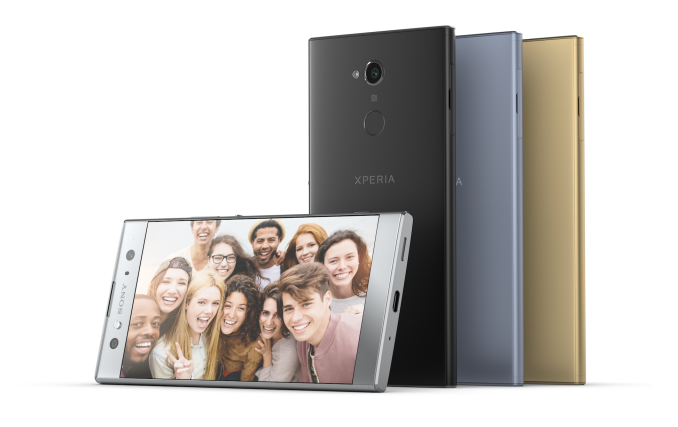
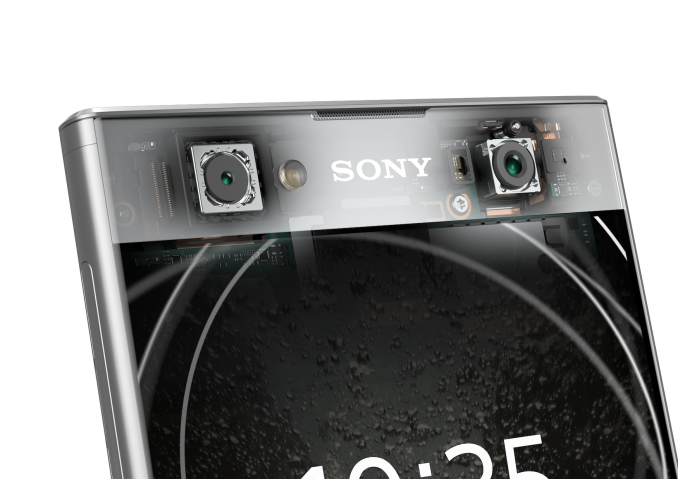
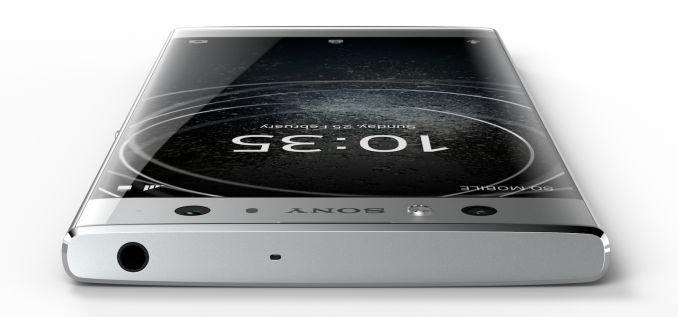
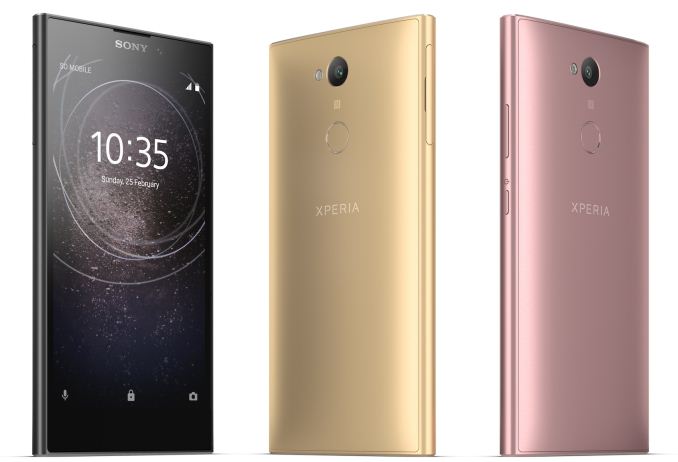
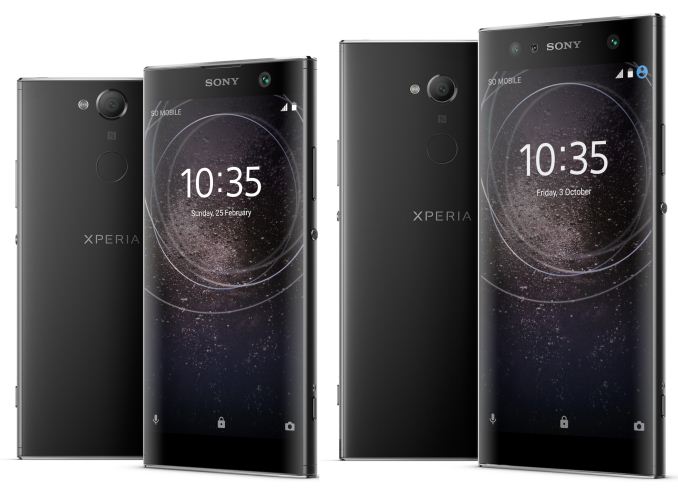

 Quote
Quote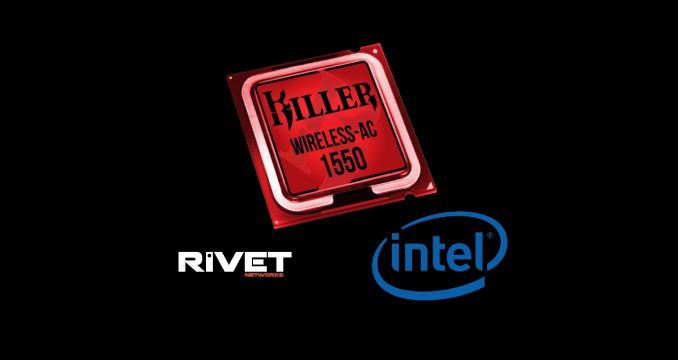
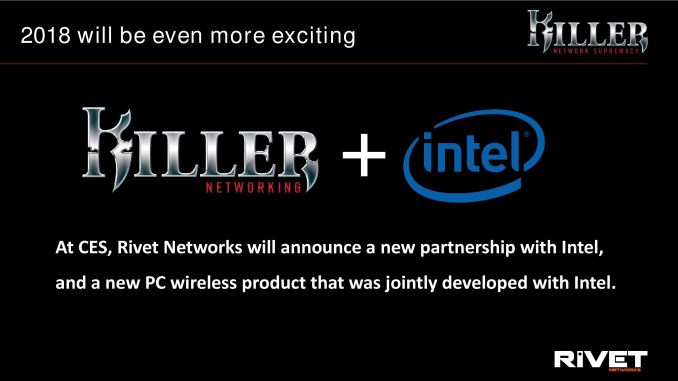
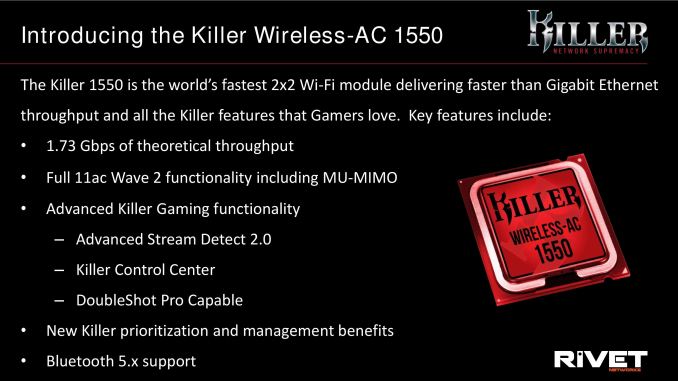
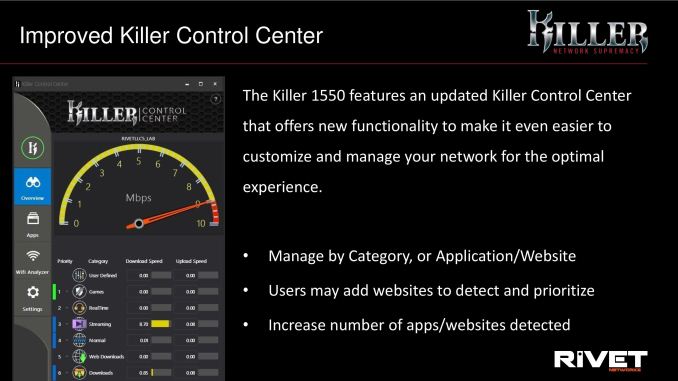
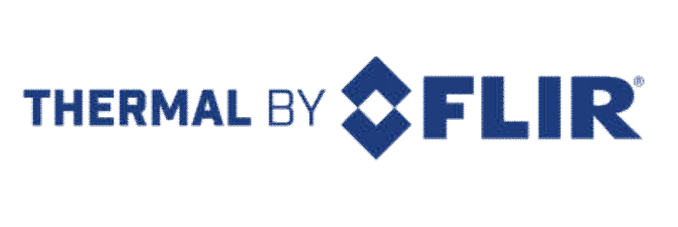
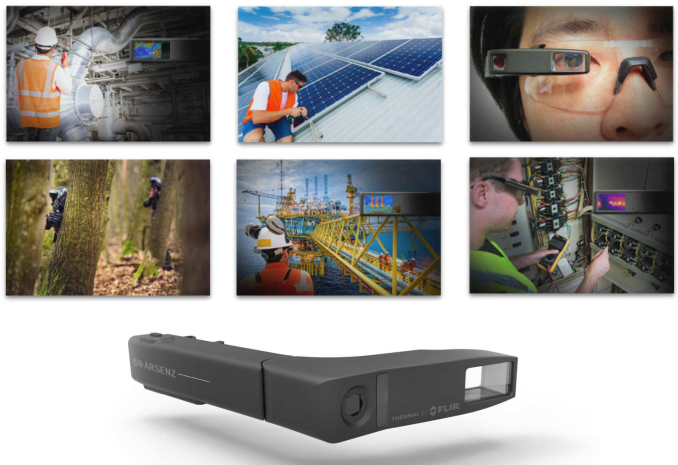

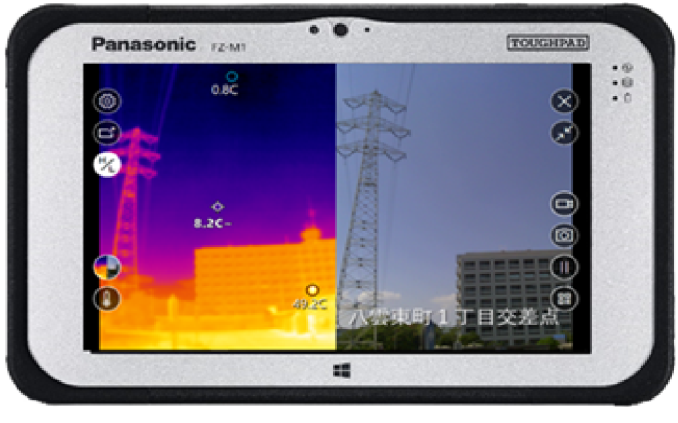








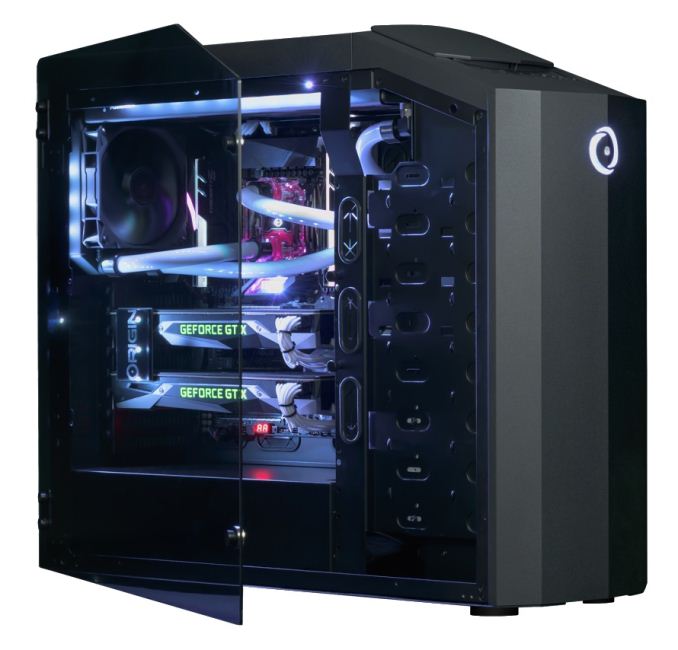
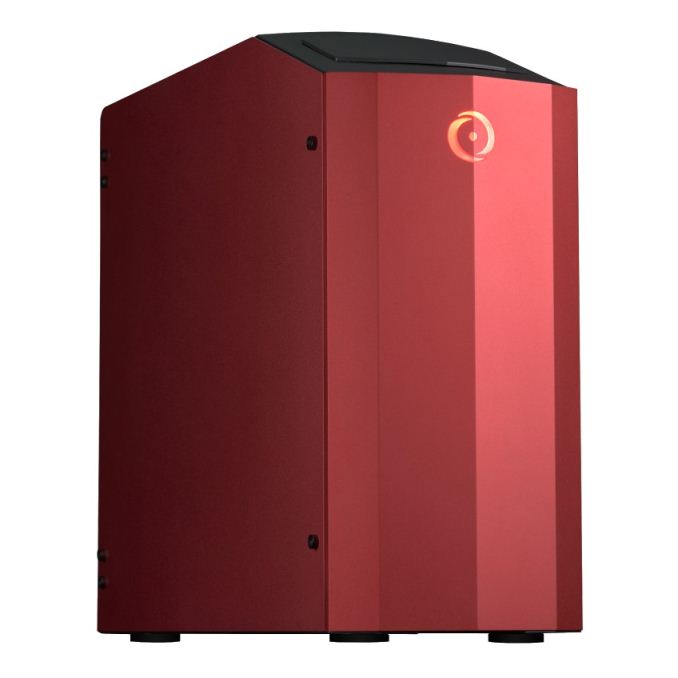
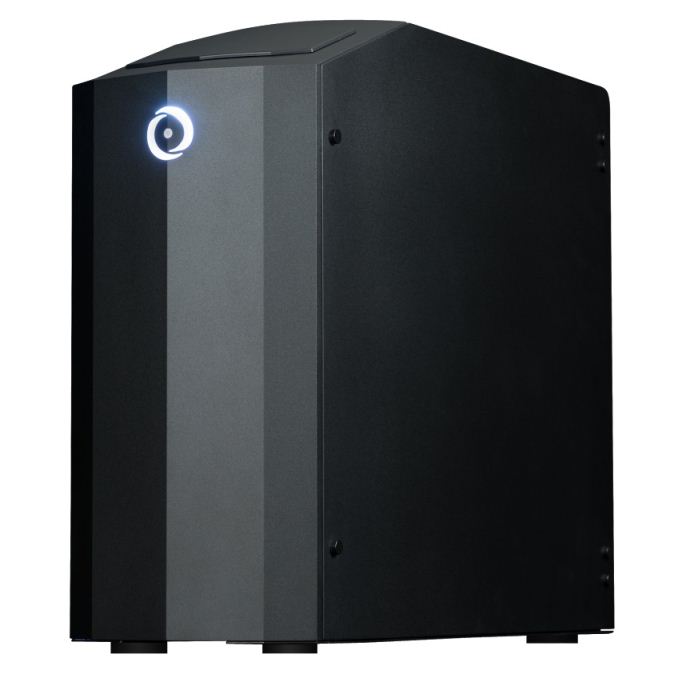
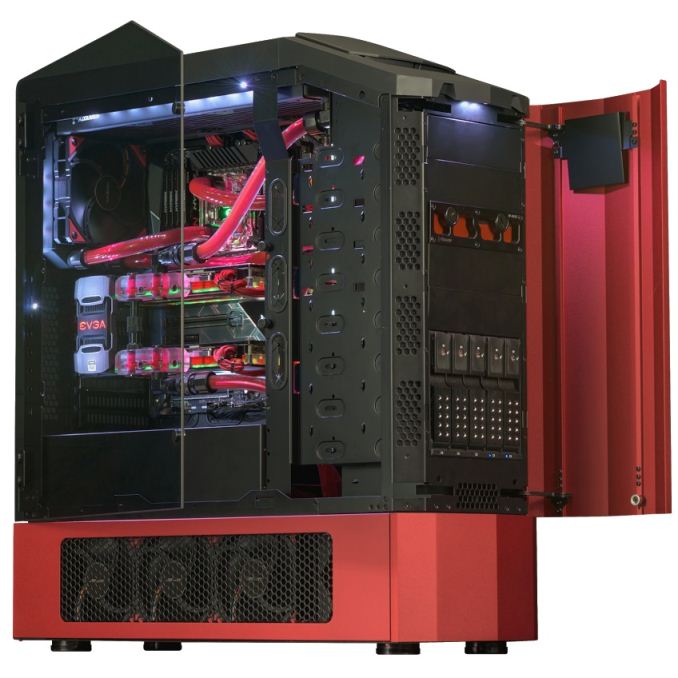

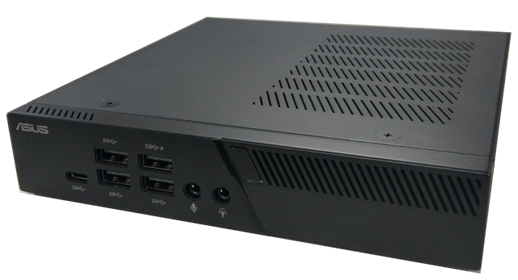
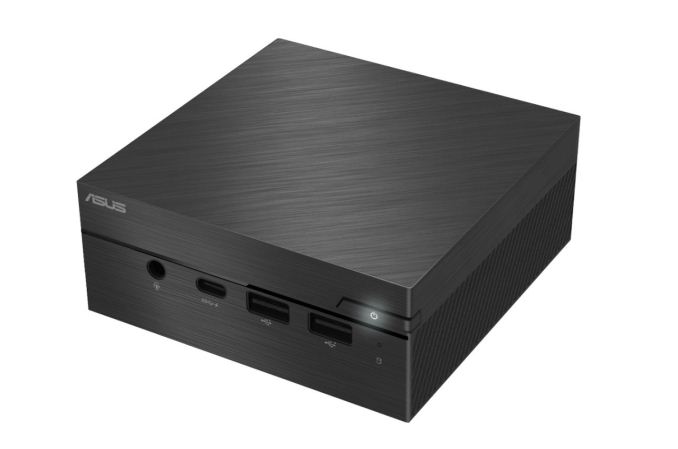
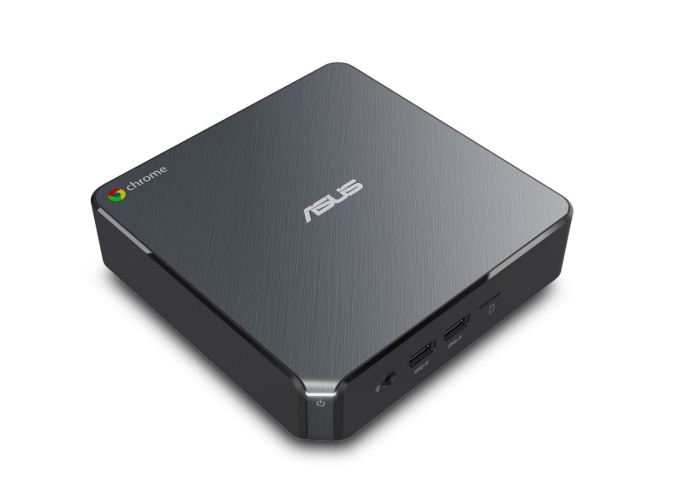
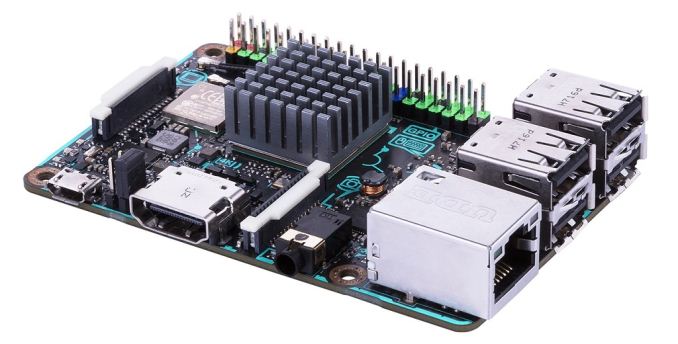

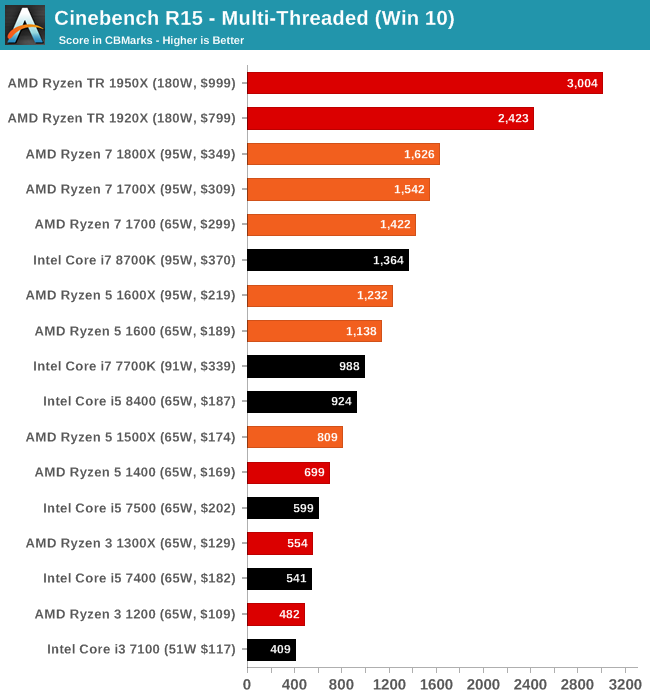
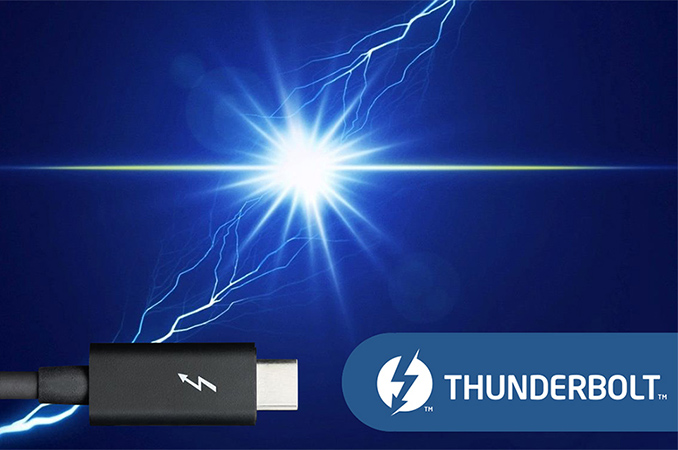
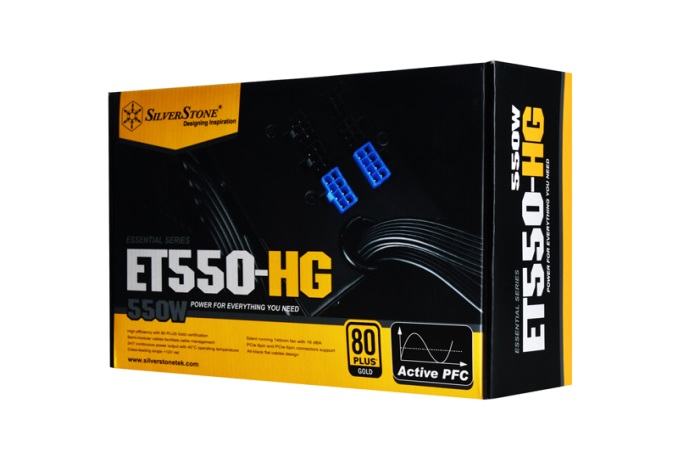
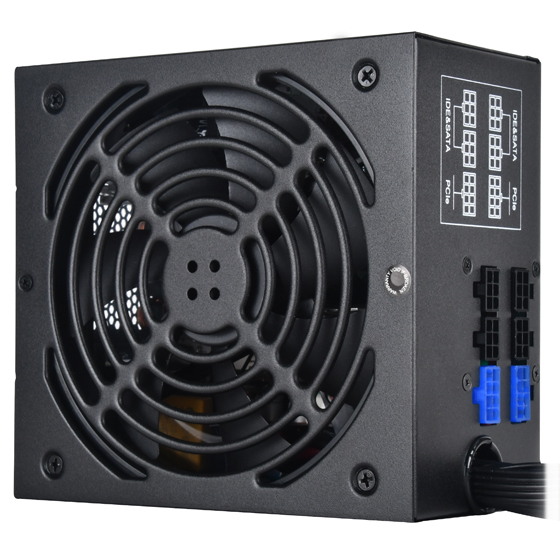

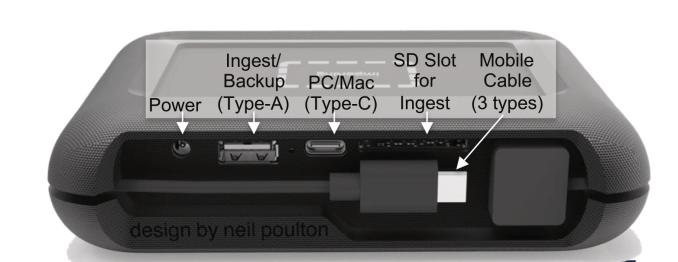

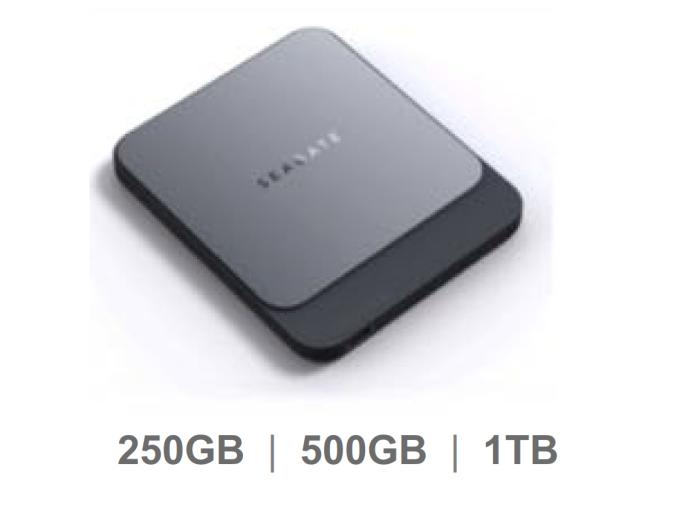




















Bookmarks